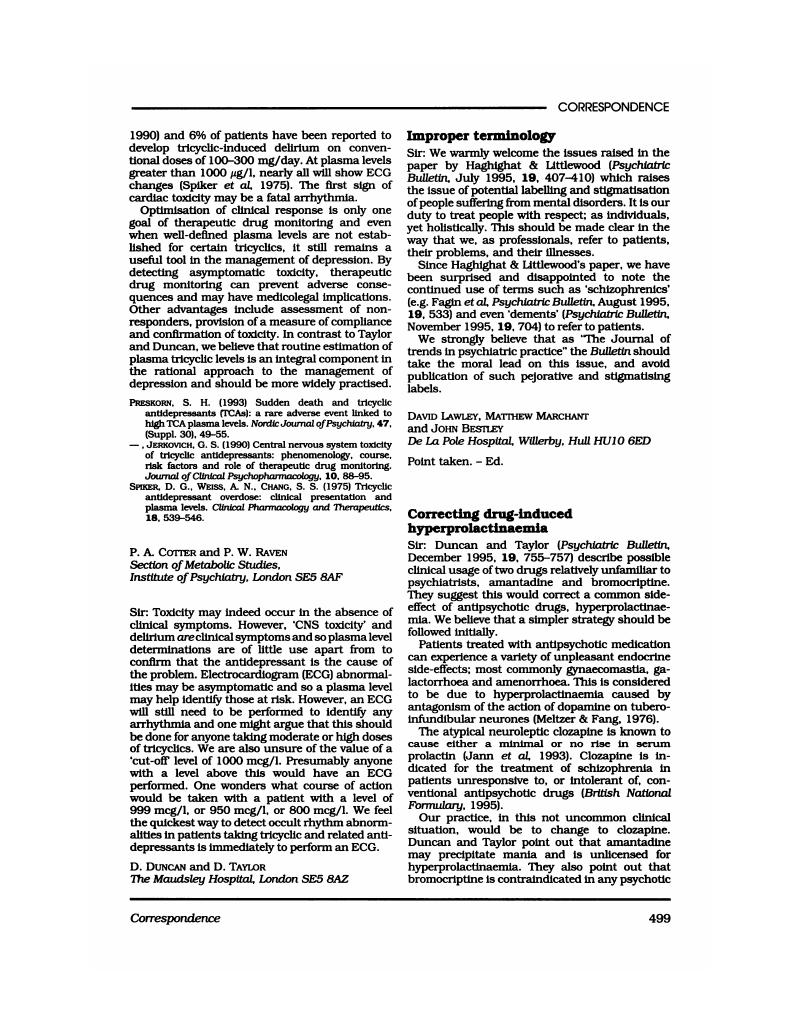No CrossRef data available.
Article contents
Correcting drug-induced hyperprolactinaemia
Published online by Cambridge University Press: 02 January 2018
Abstract
An abstract is not available for this content so a preview has been provided. As you have access to this content, a full PDF is available via the ‘Save PDF’ action button.

- Type
- Correspondence
- Information
- Creative Commons
- This is an Open Access article, distributed under the terms of the Creative Commons Attribution (CC-BY) license (http://creativecommons.org/licenses/by/4.0/), which permits unrestricted re-use, distribution, and reproduction in any medium, provided the original work is properly cited.
- Copyright
- Copyright © Royal College of Psychiatrists, 1996
References
Jann, M. W., Grimsley, S. R., Gray, E. C., et al (1993) Pharmacokinetics and pharmacodynamics of clozapine. Clinical Pharmacokinetics, 24, 161–176.Google Scholar
Meltzer, H. Y. & Fang, V. S. (1976) Serum prolactin levels in schizophrenia – effect of antipsychotic drugs: a preliminary report. In Hormones, Behavior and Psychopathology (ed. Sachar, E. J.), pp. 178–191. New York: Raven Press.Google Scholar



eLetters
No eLetters have been published for this article.